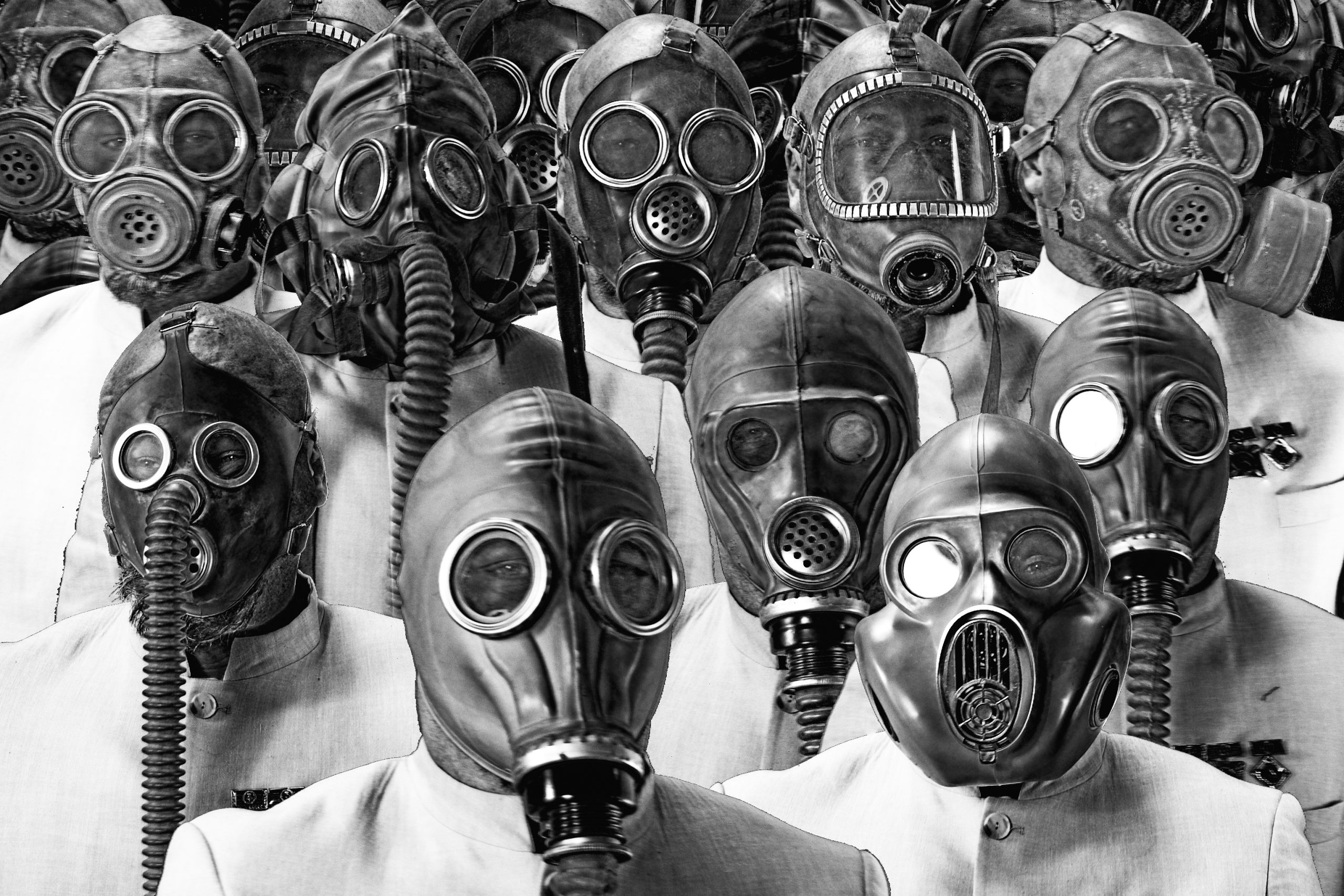The gas mask is a breathing device that protects the wearer against harmful substances in the air. A typical gas mask consists of a tight-fitting facepiece that contains filters and an exhalation valve, transparent eyepieces and straps to hold it to the head, sometimes in association with a protective hood. The filters clean the air, but do not add oxygen to it (some models are connected by a hose to a separate tank of oxygen). The first modern masks were designed for use in chemical warfare, but they were soon used for other purposes as well. During World War II, for example, the gas mask was employed to protect troops against exposure to phosgene and mustard gases. Since then, the technology has been improved to include protection against other chemicals, such as nerve agents.
The modern gas mask is a highly complex piece of equipment. Its components must be able to filter out different chemicals at varying concentrations and at a range of temperatures, and they must be resistant to a wide range of environmental factors, such as heat, humidity, rain, ice and snow. They must also be easy to wear and assemble, lightweight and comfortable enough to be worn for long periods of time, and easily adaptable to the environment and activity in which they are used.
Despite these challenges, the gas mask continues to be an integral part of the military’s arsenal. The earliest devices, developed in response to the 1915 chemical weapons attack at Ypres, were little more than flannel masks that covered the head and neck, with a peephole. They were often coated with sodium thiosulfate to neutralize chlorine gas, and they were eventually replaced by more advanced masks that attached to a box canister filled with activated charcoal to filter poison gases.
The filters in a modern gas mask can be made from a variety of materials. Silicone, for example, is used in the seals of many gas masks because it withstands ozone gas, organic vapor and particulate protection, and tear gas very well. Other materials, such as molecular sieves and porous metal-organic framework compounds, are being investigated for their ability to remove other chemical contaminants.
Not all soldiers who wear gas masks are aware of the intricate processes that go into making them work properly, but each one will have their own personal experience with a faulty or malfunctioning unit, whether in training or in a combat situation. At a nondescript building at Redstone Arsenal in Alabama, for example, the Protection Assessment Test System (PATS) lab is responsible for testing every Department of Defense-issued gas mask before a Soldier can deploy or take part in field exercises with units from other branches of the military. The PATS lab is a hidden gem that provides vital safety for soldiers around the world.

